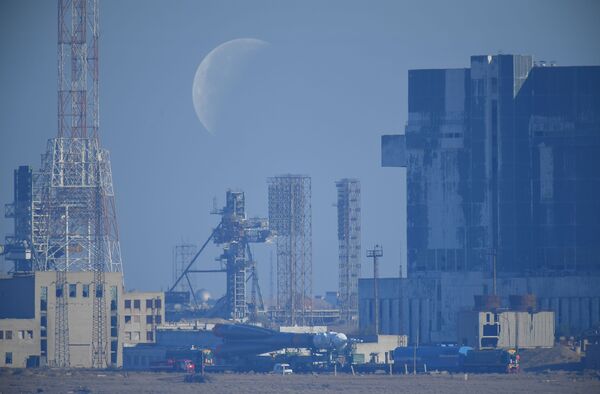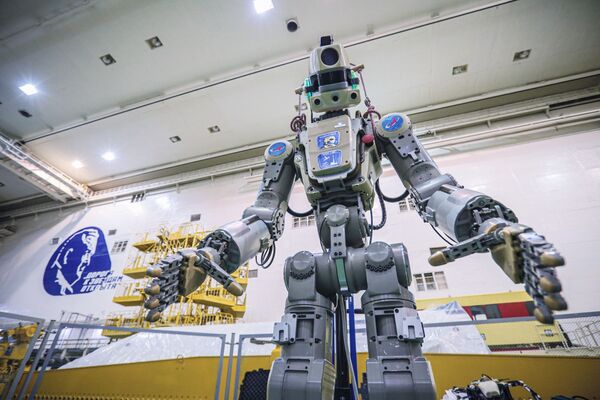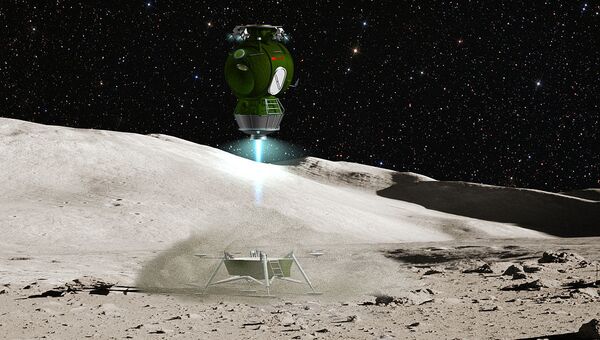US-based science news outlet Ars Technica has questioned whether Russia has the capability to land robotic rovers on the Moon in the near future, pointing to a lack of funding and the amount of time which has passed since the last time Moscow successfully sent a ground-based probe to the Earth's satellite.
Commenting on the recent report that Roscosmos is considering the deployment of a variant of its Skybot F-850, better known as the FEDOR (‘Final Experimental Demonstration Object Research’) humanoid robot fitted with wheels for planetary exploration, to the Moon, Ars Technica contributor Eric Berger argued that while Russia’s plans were a “novel approach,” Roscosmos may simply not have the cash and experience needed.
“This is certainly a novel approach to exploration, and it has some benefits for worlds with gravity, as a robot with ‘hands’ would have the ability to manipulate tools and perform other tasks in the place of humans. The wheels, of course, would allow for much greater mobility on worlds like the Moon and Mars,” Berger wrote.
“But there are serious questions about funding for such an enterprise in Russia, as well as technical questions about whether Roscosmos would be able to mount an interplanetary mission,” he added. “The last time the country successfully sent a spacecraft to land on another world came in 1976, when its Luna 24 mission returned 170 grams of lunar regolith to Earth.”
Is Berger Right?
With a budget of about 128 billion rubles (about $2 billion US) in 2018, Roscosmos’s budget is considerably below that of NASA, with the US space agency enjoying a budget of $21.5 billion for fiscal year 2019. Tighter budgets make for fewer resources to devote to any individual programme.
However, budgets aren’t everything, as evidenced by the continued use of the tried and tested Soyuz rockets to send cosmonauts and astronauts to the ISS, and by NASA’s continued purchase of Russian engines for its own rockets, and even its advanced experimental spacecraft designs.

Furthermore, as pointed out in the 2011 book ‘Soviet Robots in the Solar System: Mission Technologies & Discoveries,' by Russian astronomer Dr. Mikhail Marov and US space scientist Dr. Wesley Huntress, although Russia’s last lunar outing does indeed go back over 40 years, the Soviet and later Russian space agencies have had considerable experience in sending probes, orbiters and landers to other celestial bodies, including Venus and Mars, with the last attempt at Mars made as recently as 1996.
There’s no question that the collapse of the Soviet Union and the financial and material turmoil that accompanied that event took a major toll on Russia’s space exploration capabilities. However, as recent developments, including the launch of the Spektr-RG X-Ray telescope and developments in the US ‘Soviet-inspired’ Dream Chaser programme can attest, radically advanced Soviet technologies from the 1980s which have laid dormant can be reactivated if the time, effort, and financing is devoted to doing so, and this can apply to Russia’s planetary exploration activities as much as anything.
The Fedor programme was developed from scratch starting in 2014, and took its first small step toward space exploration in September, when the robot successfully completed a round trip to the ISS, where a number of experiments in weightlessness and the use of tools in avatar mode were carried out.

Yevgeny Dudrov, executive director of Androidnaya Tekhnika, the company behind Fedor, recently said his staff were working on a “road map” to determine what kinds of robots will be needed for future missions, whether these be repair work outside the ISS, repair of orbiting satellites, or work as ‘robot colonisers’ on the Moon. Just how much time the company would require to turn its anthropomorphic robot into a half-anthropomorphic/half wheeled design is hard to say, but the existence of a concept design which recently appeared on Fedor’s official Twitter account seems to indicate that Androidnaya Tekhnika is beyond mere brainstorming on the project.
Slowly but surely, Russia’s lunar ambitions are taking shape, with Roscosmos announcing earlier this year that work was underway on the new Yenisei super heavy launch vehicle expected to be used in future lunar missions, with a draft design of the carrier rocket to be completed by the end of this year.
Furthermore, in May, a space industry source told Sputnik that a Russian ground probe with an anthropomorphic robot onboard may be launched to the Moon aboard the Luna-29 spacecraft by the late 2020s, with that mission planning to include a 1.3-tonne lunar rover launching from Russia’s Vostochny Cosmodrome aboard an Angara-A5V launch vehicle with an oxygen-hydrogen booster.
In other words, given existing Russian programmes and plans to return to the Moon in a variety of capacities in the coming decades, perhaps it’s not so far-fetched to suggest that Roscosmos could very well make the effort to send up an anthropomorphic robot based on the Fedor design, and in the not so distant future.






